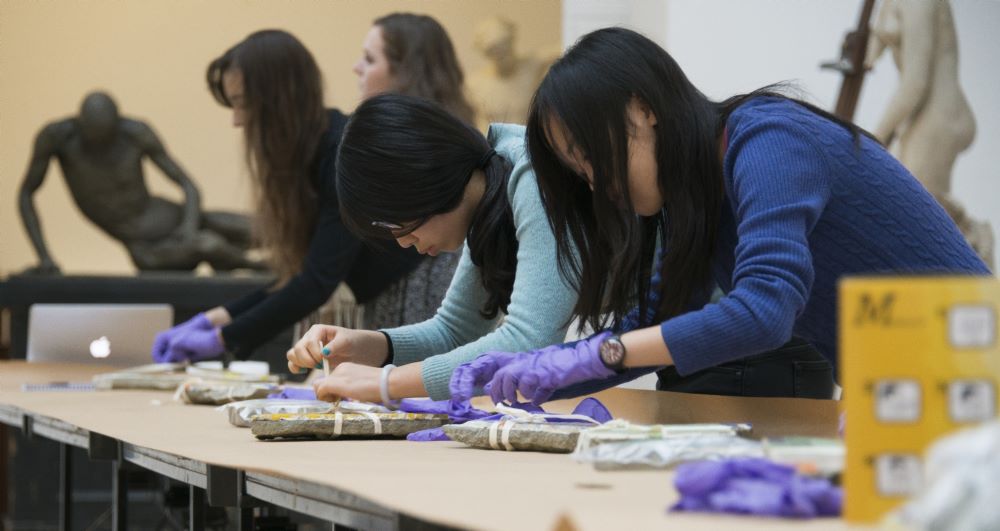
In this post, Dr Francesca Baseby, Manager of the Centre for Research Collections, reveals the benefits of Object Based Learning, an experiential learning method available to students and staff at the university…
The Centre for Research Collections (CRC) provides access to The University of Edinburgh’s unique cultural and heritage collections. The CRC provides access to collections through a dedicated reading room, enquiries service, and digitisation services. An area of significant growth in the last five years has been Object Based Learning (OBL).
“Object-based learning (OBL) is an experiential pedagogy concerned with the close and tactile study of material things, such as artworks, specimens, texts and artifacts… Like its historical antecedents, object lessons and object teaching, contemporary OBL practice draws its strength from the power of sensory experience.” (Barlow, 2017, p.27)
At the CRC, this approach to learning is delivered depending on the requirements of the course. Sessions may be delivered by professional staff (e.g. archivist, curator) or academic staff, but more often both working collaboratively. Professional staff can provide guidance about collections content and OBL teaching methods, in addition to practicalities such as room bookings and safe handling practices.
So what does OBL look like in practice? OBL is both sensory and emotional, interrogating the touch, look, sound and even smell of an object. It is about looking beyond the object as a container of information (whether textual or graphic) and considering what its physicality can tell us about the context in which it was created, consumed and preserved. There is also a sense of excitement in classes about the opportunity to see and handle unique items.

In 2015, the CRC used student feedback forms to better understand the impact of OBL on the student learning experience. Students reported that they enjoyed the tactile way of learning and that the experience provoked discussion and questions. They also felt more confident safely handling historic items, and appreciated having expert knowledge on hand when professional staff were present.
Seeing the drawings in their real state gives insight into how the drawings were composed in terms of drawing techniques and materials. The archives material shows projects and proposals that were not realised and are therefore hard to find on internet sources. The drawings are easier to study, looking at digital images means I often overlook detail. (1st year UG, Architecture)
OBL enabled me to appreciate the documents on a material level, discussed binding, papers, glue, corrosion, not just content. (3rd year UG, History)
Instrumental understanding the development of this kind of work / craftsmanship… brilliant experience, something very special about it. (UG, Illustration)
It is always an excellent experience to really see, touch and feel the objects that are usually seen and appreciated in museums or galleries. (PG, History of Art)

Staff and students are encouraged to get in touch if they would like to learn more about OBL opportunities at the CRC.


